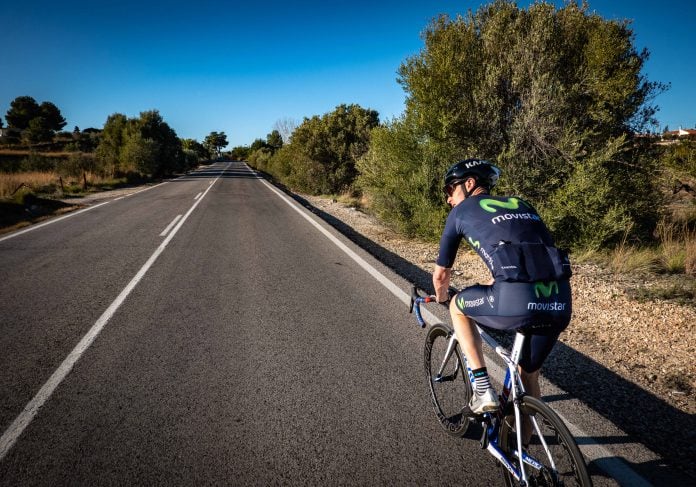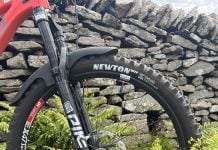We’ve all been there, long into a ride and you just run out of gas. Whether it’s a regular occurrence, or only started recently, it’s not something we want to happen often. When your body runs out of energy it’s not a fun place to be. Building a strong base endurance is fundamental to cycling well over a long distance. Below we’ve listed some top tips to keep you stronger for longer.
— WHY YOU SHOULD TRAIN WITH POWER —
 Summer isn’t far away, and a lot of us find ourselves trying to build fitness ready to tackle the next crazy challenge we’ve signed up to. It may be hard to imagine, but at some point the place you currently struggle, will be a breeze in comparison. There are some distances that will never feel entirely comfortable, though with a solid base endurance they’ll certainly be more manageable.
Summer isn’t far away, and a lot of us find ourselves trying to build fitness ready to tackle the next crazy challenge we’ve signed up to. It may be hard to imagine, but at some point the place you currently struggle, will be a breeze in comparison. There are some distances that will never feel entirely comfortable, though with a solid base endurance they’ll certainly be more manageable.
There are a few tips and tricks to improve your stamina and accumulate fitness, though there is one aspect more important than all the rest, consistency. Consistency is king when it comes to getting the base in for your endurance.
“Back in my Day”
 A much more traditional approach is to formulate a “training pyramid”. Building the base endurance out with volume, before increasing the intensity, and decreasing the time to add that high quality spark to your legs. Though the modern cyclist isn’t restricted by the same boundaries. Turbo trainers, power data and training metrics have completely revolutionised the way we approach training, and it’s beginning to pay off.
A much more traditional approach is to formulate a “training pyramid”. Building the base endurance out with volume, before increasing the intensity, and decreasing the time to add that high quality spark to your legs. Though the modern cyclist isn’t restricted by the same boundaries. Turbo trainers, power data and training metrics have completely revolutionised the way we approach training, and it’s beginning to pay off.
A lot of modern cyclists find that training high intensity, low volume sessions in the winter a much more effective way to perform well over long endurance events in the summer. The golden oldies in your club may have the approach to ride long you have to ride long. Though building base endurance doesn’t always look the same. With the demands of working life and a day job piling up, it’s not easy to “pop out” for a 10 hour endurance ride on a Tuesday morning before meetings….
 It’s easy to build base endurance if you’re fit, it just takes some tweaking and a change in focus. Medium length rides with built in “sweet spot” sets are one of the most effective ways to build endurance, mixed with the long, low intensity weekend ride.
It’s easy to build base endurance if you’re fit, it just takes some tweaking and a change in focus. Medium length rides with built in “sweet spot” sets are one of the most effective ways to build endurance, mixed with the long, low intensity weekend ride.
The Build Up:
Often people find that their base endurance zone is between 55 and 75% of their FTP (functional threshold power). And training/racing in this zone is the most sustainable for an endurance event. Though if you’ve been doing training rides of up to 90 minutes, you might find it difficult to jump on the bike and knock out a weekend 100 miler.
— WHY YOU NEED A NEW BIKE FIT —
 Building up the intensity and duration slowly but surely will allow you to unlock the extra time/distance you need. And throughout this process consistency is key. You won’t need to ride the full distance of your event in training, though you’ll need to know how you’re going to manage the extra distance. Riding the distance in training is often just to settle the nerves and reassure you the base endurance is there to make it possible.
Building up the intensity and duration slowly but surely will allow you to unlock the extra time/distance you need. And throughout this process consistency is key. You won’t need to ride the full distance of your event in training, though you’ll need to know how you’re going to manage the extra distance. Riding the distance in training is often just to settle the nerves and reassure you the base endurance is there to make it possible.
Sweet spot riding is often used to increase endurance in a shorter period of time. These tempo sessions will be completed with time spend at 76 – 90% of your FTP. You should be able to hold these efforts for around 20-30 minutes, and as you adapt to the training you’ll be able to sustain the zone for longer.
 Any shorter intervals may improve a riders FTP, though it’s the ability to sustain higher percentages of that FTP that is more useful to the endurance rider. For example, an elite Ironman athlete or grand tour cyclist will be able to sustain a high percentage for much longer than the average amateur.
Any shorter intervals may improve a riders FTP, though it’s the ability to sustain higher percentages of that FTP that is more useful to the endurance rider. For example, an elite Ironman athlete or grand tour cyclist will be able to sustain a high percentage for much longer than the average amateur.
— CALORIES BURNED CYCLING – THE NEED TO KNOW —
Once you can hold your tempo rides comfortably for two or three 30 minute intervals, you’ll be able to start building them into your long ride for the maximum training benefit. This will allow you to sit in the group when the pace is really being pushed, and recover enough to ride well to the end of the event.
Recovery is Key:
 You may have heard people say that training doesn’t make you fitter, recovering from the training does. The adaptation and recovery is where you make the most gains. Making sure you don’t get ill or injured, and your body recovers enough to take the stress of training again.
You may have heard people say that training doesn’t make you fitter, recovering from the training does. The adaptation and recovery is where you make the most gains. Making sure you don’t get ill or injured, and your body recovers enough to take the stress of training again.
Whether it’s maximising sleep, eating a healthy, balanced diet or keeping the protein content high. All of these things, as well as others, will allow you to recover successfully.
— HOW TO FUEL YOUR LONG RIDE —
Whatever your goal for the summer, we hope your training goes smoothly and you arrive at the event feeling prepared and ready. Though we can’t do the training for you, we have a whole range of equipment and apparel to make sure you’re properly prepared through the next few months.








